Chaenactis carphoclinia var. carphoclinia, Pebble Pincushion
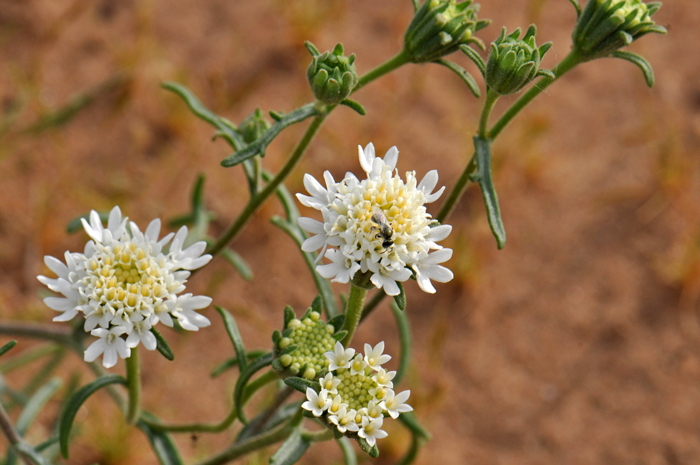
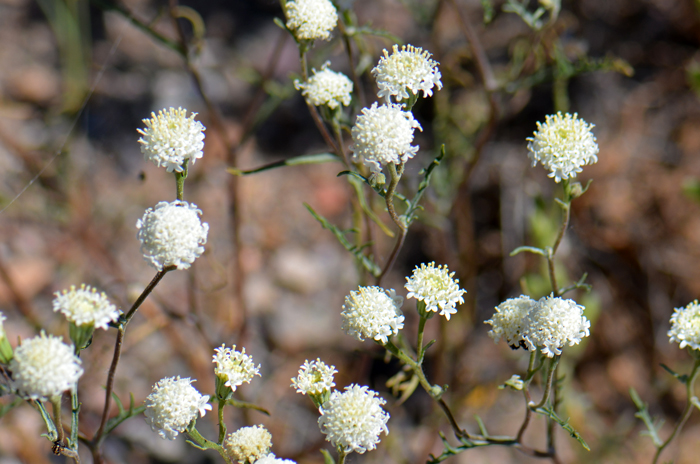
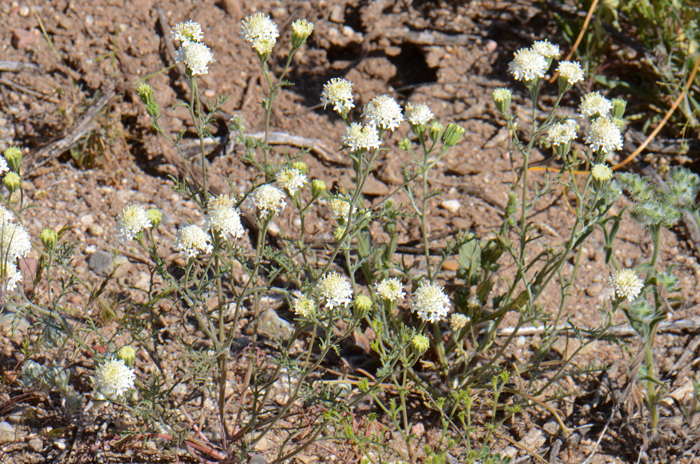
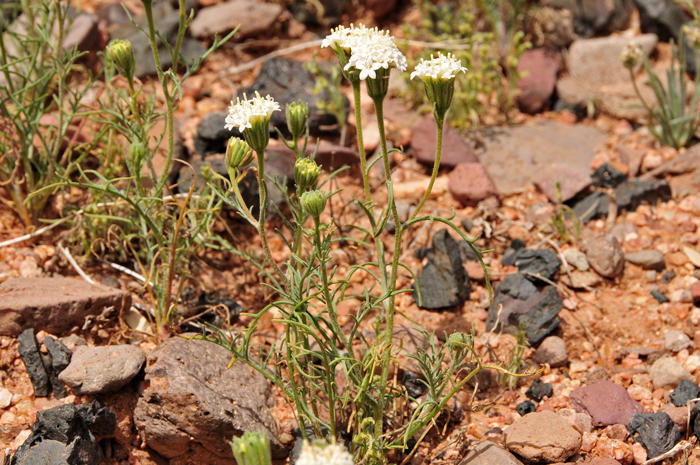
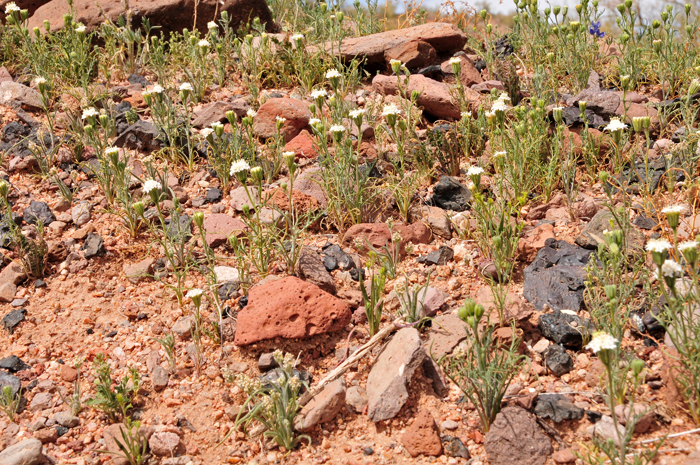
Scientific Name: Chaenactis carphoclinia var. carphoclinia
Common Name: Pebble Pincushion
Also Called: Pincushion Flower, Straw-bed Pincushion
Family: Asteraceae, Sunflower Family
Synonyms: (Chaenactis carphoclinia var. attenuata)
Status: Native
Duration: Annual
Size: 4 to 12 or (16) inches (10-30 or (40) cm).
Growth Form: Forb/herb; erect branching stem, usually with 1 main stem; whitish pubescent.
Leaves: Green; basal and cauline leaves, the basal leaves wither, cauline leaves are divided into a few lobes; leaves are mostly linear, small, about 4 inches (10 cm) with a slender petiole.
Flower Color: White or pinkish-tinted; one to several floral heads borne on tips on the inflorescence, several per stem, heads are small, between .25 and .50 inch (.63 -1.27 cm); flowers discoid with enlarged outer corolla; the heads are bracketed by flat sharp-pointed phyllaries somewhat reddish; anthers exserted beyond the corolla are noticeable; fruit is an achene a few millimeters in length with a scaly pappus.
Flowering Season: January, February or March through May or June.
Elevation: 300 to 6,200 feet. (90-1,900 m)
Habitat Preferences: Shrublands in upper deserts; open plains, mesas, slopes, flats; rocky, gravelly and sandy areas.
Recorded Range: Chaenactis carphoclinia is found in southwest North America in the states of AZ, CA, NM, NV and UT. Pebble Pincushion is also found in Baja California and Sonora Mexico.
North America & US County Distribution Map for Chaenactis carphoclinia var. carphoclinia.
North America species range map for Chaenactis carphoclinia:
North American range map courtesy of Virginia Tech, Dept. of Forest Resources & Environmental Conservation
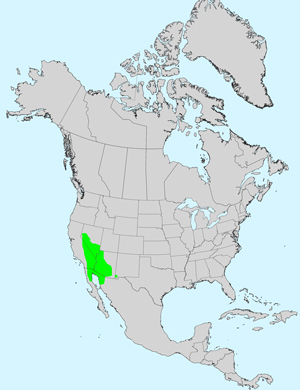
U.S. Weed Information: Unknown
Invasive/Noxious Weed Information: Unknown
Wetland Indicator: Unknown
Threatened/Endangered Information: According to California Native Plant Society, Inventory of Rare and Endangered Plants, Peirson's Pincushion, Chaenactis carphoclinia var. peirsonii is listed as 1B:.03 Rare, threatened, or endangered in California and elsewhere; 0.3: Not very endangered in California.
Genus Information: In North America there are 17 species and 17 accepted taxa overall for Chaenactis. Worldwide, The Plant List includes 19 accepted species names and a further 55 scientific names of infraspecific rank for Chaenactis.
Members of Chaenactis are commonly referred to as “pincushions” or “dustymaidens”.The genus Chaenactis was published in 1836 by Augustin Pyramus de Candolle.
In the Southwestern United States: Arizona has 6 species of genus, California has 13 species, Nevada has 8 species, New Mexico has 3 species, Texas has 0 species, Utah has 5 species. All data approximate and subject to revision.
There are 2 varieties in Chaenactis carphoclinia;
Chaenactis carphoclinia var. carphoclinia, Pebble Pincushion (AZ, CA, NM, NV, UT and Baja California and Sonoran Mexico);
* Chaenactis carphoclinia var. peirsonii, Peirson’s Pincushion (CA).
Comments: Pebble Pincushion, in wet years, is one of the most abundant spring wildflowers in the Sonoran and Mojave Deserts and extending into the southern Great Basin and northwestern Chihuahuan Deserts. This species is similar in appearance to Esteve’s Pincushion, for which it is often mistaken. In general Pebble Pincushion is a much smaller plant with multiple flower heads and the flowers are more cream colored and not as white as Esteve’s Pincushion.
This sub-species is mostly a Mojave Desert species given its distribution along the western part of Arizona and heavily represented in southeast Nevada and California.
In Southwest Desert Flora also see: Esteve’s Pincushion, Chaenactis stevioides and Fleshcolor Pincushion, Chaenactis xantiana.
In Clark County, Nevada, (Arden Study Area 1976) Pebble Pincushion has been identified as an important food source of the southwestern Desert Tortoise (Gopherus agassizii).
The genus Chaenactis was published in 1836 by Augustin Pyramus de Candolle.
The species epithet carphoclinia (carphoclin'ia:) from the Greek words karphos for “a small dry object, splinter, twig” and kline, “bed,” and thus somewhat obscure.

